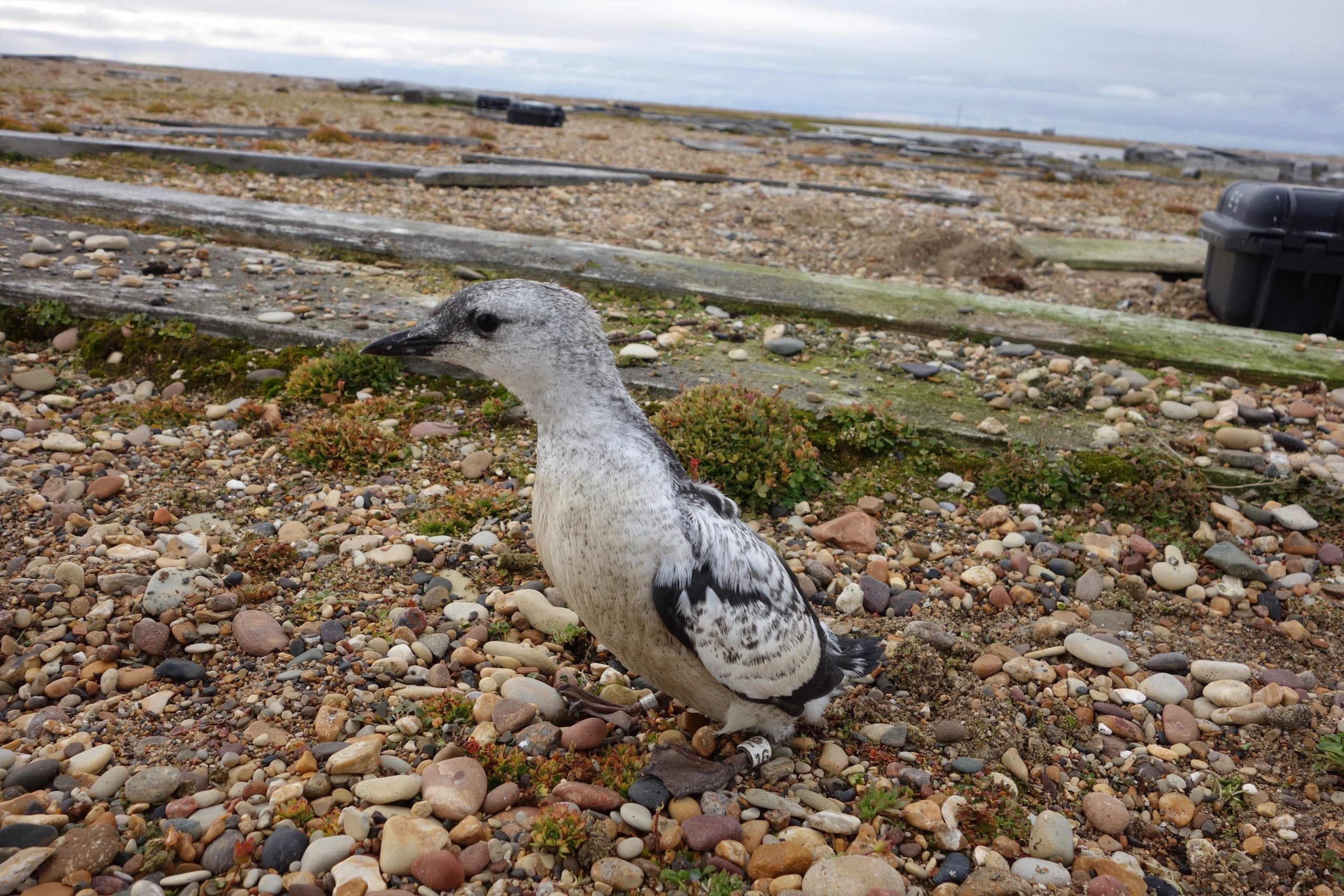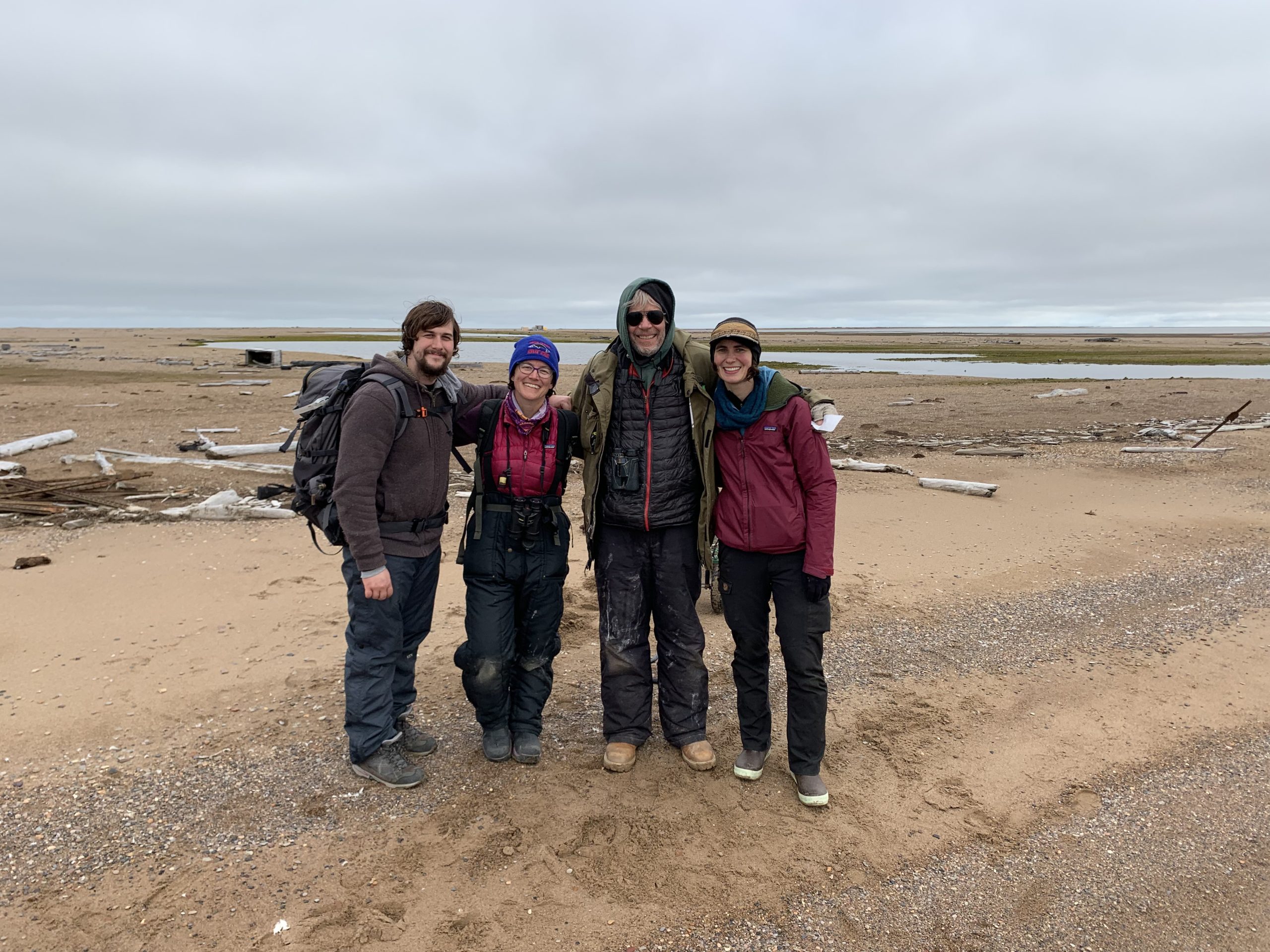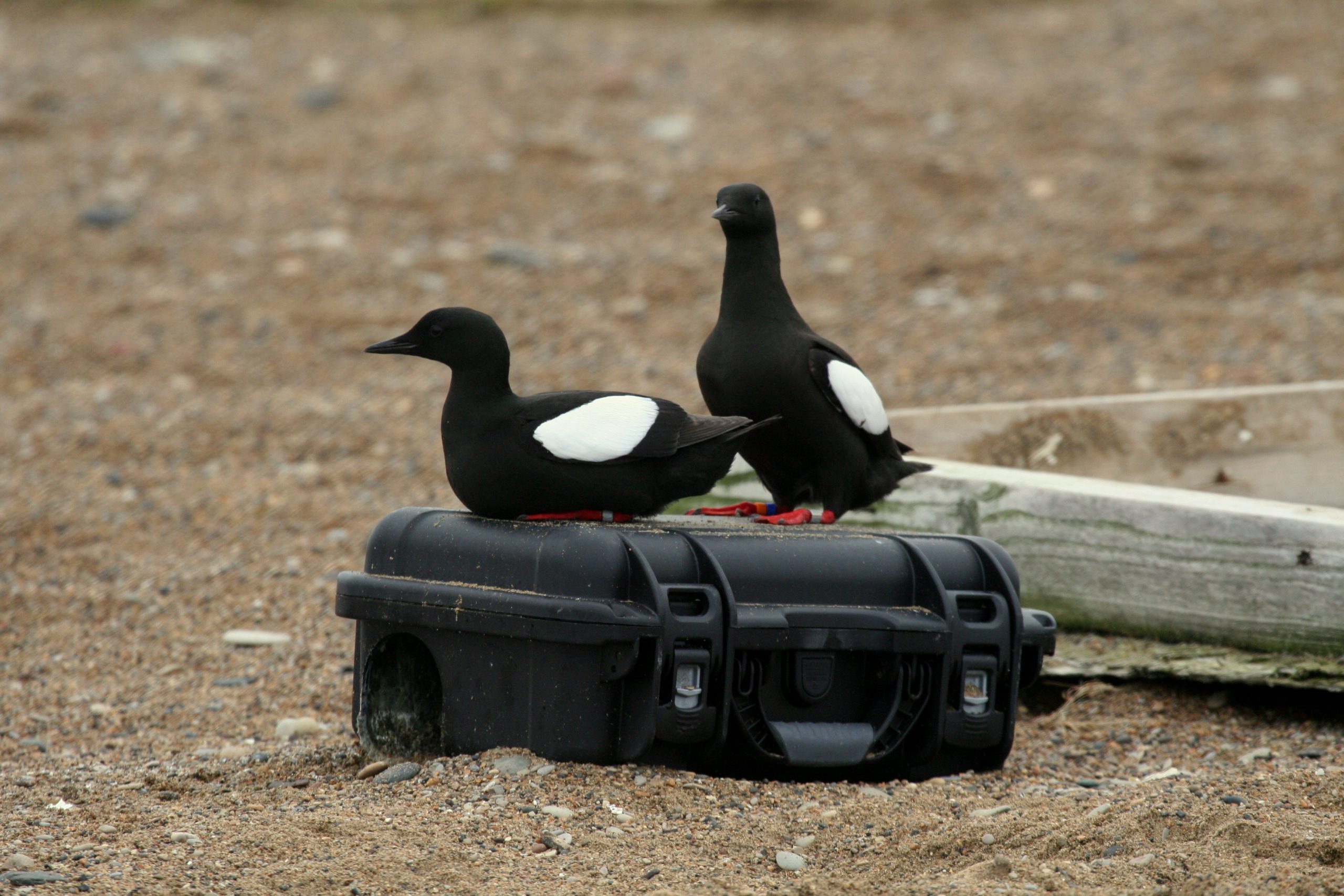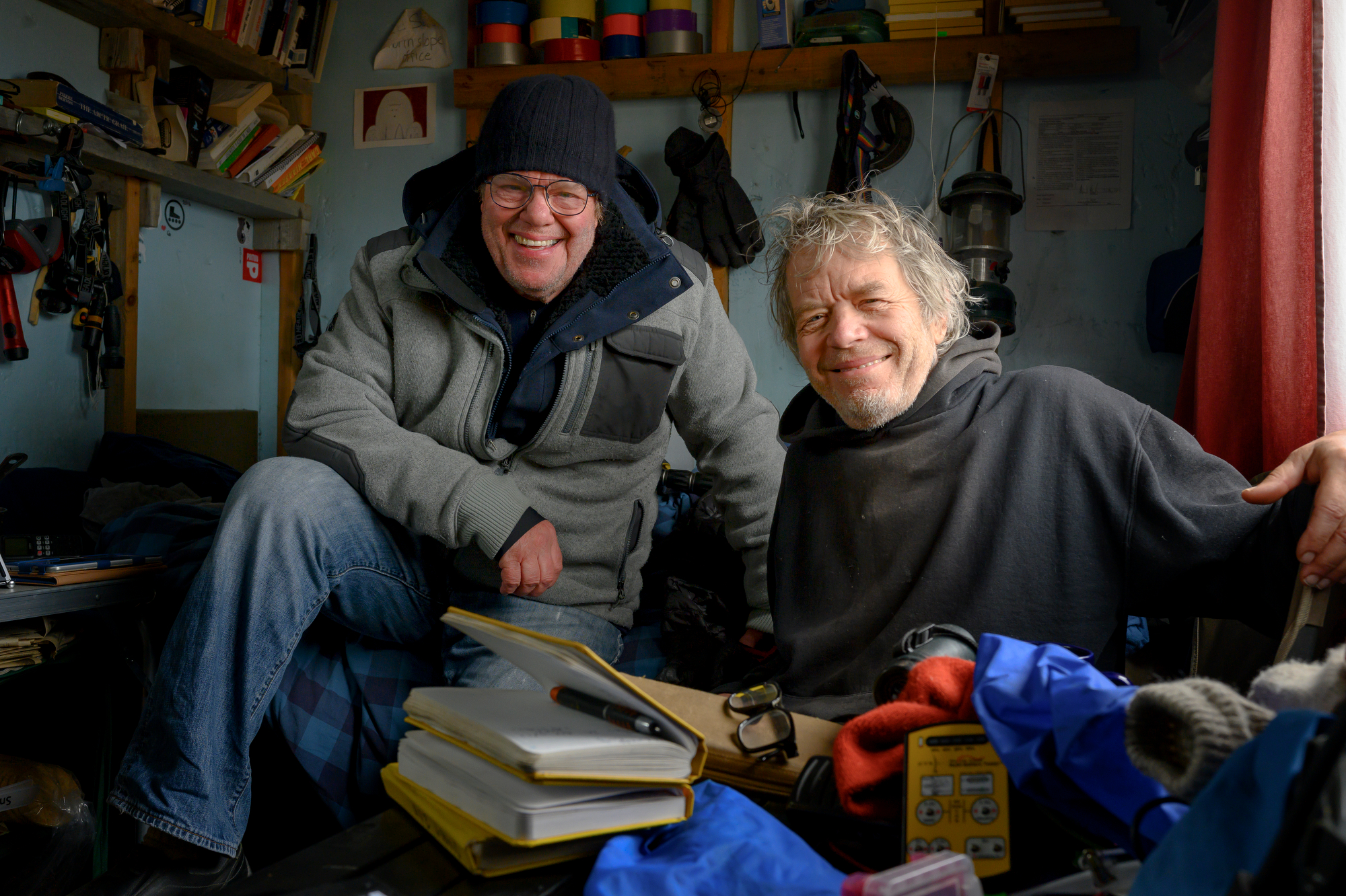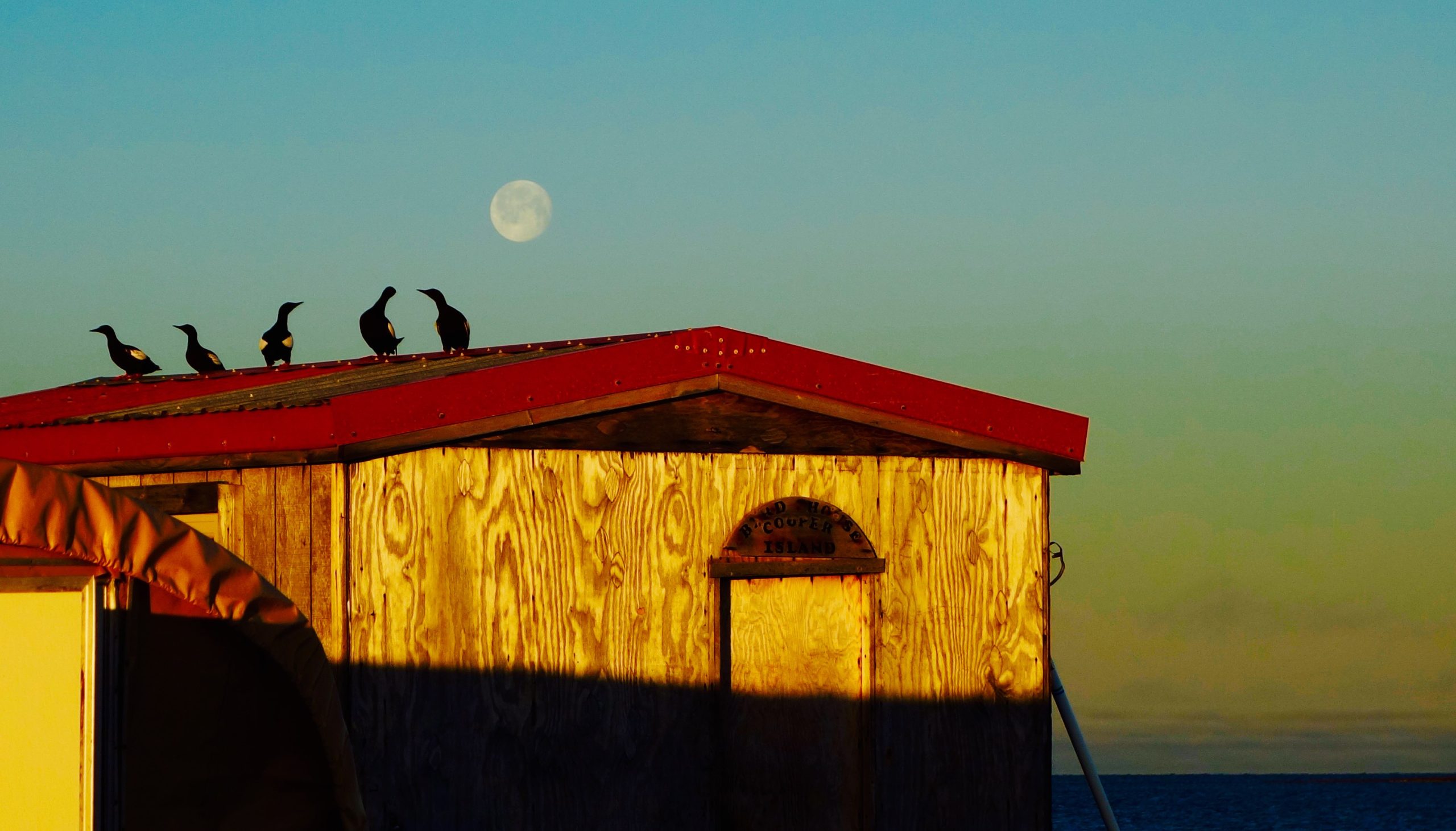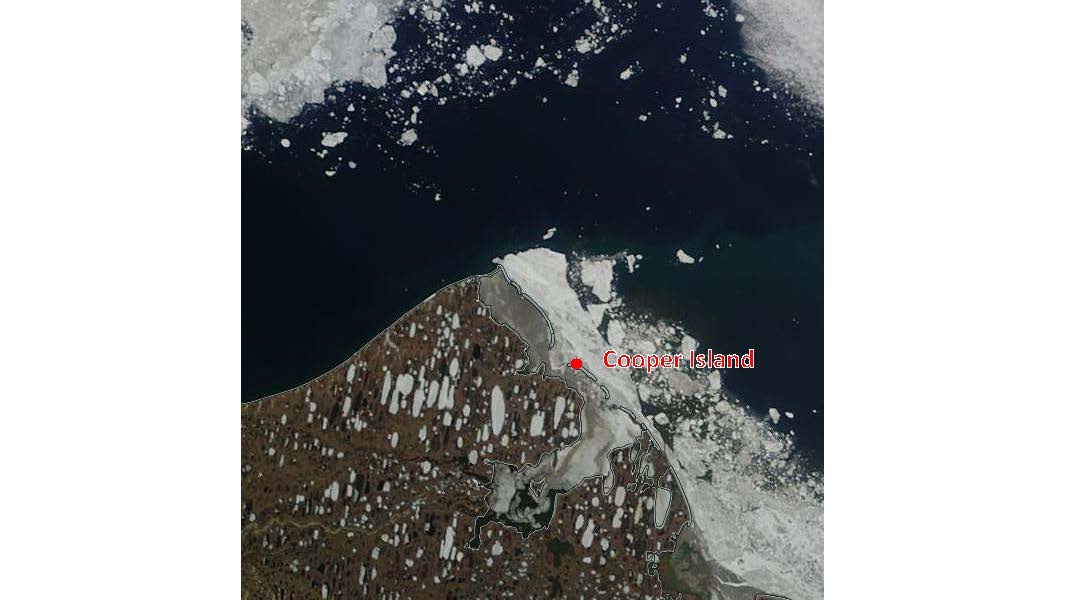by George Divoky While much has changed over the course of the 45 summers I have spent on Cooper Island, as warming from anthropogenic carbon emissions has modified the Arctic’s snow and ice habitats, one thing has remained constant. The sun is always above the horizon for 24 hours when I arrive in early June and it...
Category: Field Notes
Loss of Sea Ice Takes Its Toll on Seabirds
By George Divoky The positive signs of colony size and breeding effort of the Black Guillemots on Cooper Island in June were too good to last. After very high hatching success, the decreased ice and increased water temperatures took their toll as parents were unable to find prey in the warm, ice-free waters. Rapidly shifting...
Birds on Nests During Incubation
By George Divoky The Black Guillemots on Cooper Island continued to show signs of a turnaround from the poor breeding season of 2018 as egg laying and incubations has occurred in over 75 nests this year, compared to only 25 last year. The breeding population saw the recruitment of 20 birds that had fledged from the island...
A visit from a long-term friend of Cooper Island
By George Divoky Cooper Island has provided me with a place to conduct a long-term study of an Arctic seabird and also a place where I have been fortunate to establish some long-term friendships. In June 2001, photographer Joe McNally visited the island to obtain images to accompany the New York Times story Darcy Frey was writing...
Field Season Update: 75 active nest sites
Polar bears caused me to get a cabin on Cooper Island in 2003. After a rapid retreat of sea ice in August 2002, bears trashed our tents, which required making a hasty departure from the island with the help of a North Slope Borough Search and Rescue helicopter. The first week of the 2019 field season found...
Start of the 45th field season
Even after 44 years, preparing for the field season to study Black Guillemots on Cooper Island is a time of excitement and anticipation as I gather the gear and supplies needed to survive and conduct research for three months on a remote Arctic island. This year the excitement was tempered with a high level of...
2019 Seattle Update – March 26
Tuesday March 26 at Seattle’s Swedish Club Reception at 6 pm with presentation at 7 pm Reception at 6 pm with talk at 7 pm The Cooper Island Black Guillemot colony was first recognized as a monitor of a warming climate in 2002, the 23rd year of the study. Decreasing sea ice in a rapidly melting Arctic...
44th Cooper Island field season comes to an end
End of season field report by George Divoky. For the past four decades, my field seasons on Cooper Island studying Black Guillemots have always begun with high spirits and a feeling of optimism. Experiencing the 24 hours of daylight in early June while documenting the return of individual birds to the island and their nest...
The first chick of 2018 has fledged from Cooper Island!
In a breeding season and field season that has been a tough one for both the Black Guillemots on Cooper Island and the investigators studying them, today was a day of celebration as morning nest checks revealed that the oldest nestling on the island had departed for the sea during the night. The first fledge...
Uncertain Future for Nestlings: Sea ice retreat shifts prey out of foraging range
George’s latest field report describes his daily nest checks as parents are feeding chicks to prepare them for fledging. Black Guillemots have their young remain in the nest for almost five weeks, being nearly adult weight and independent of the parents when fledging. Returning to the nest with a single fish in their bill is...
